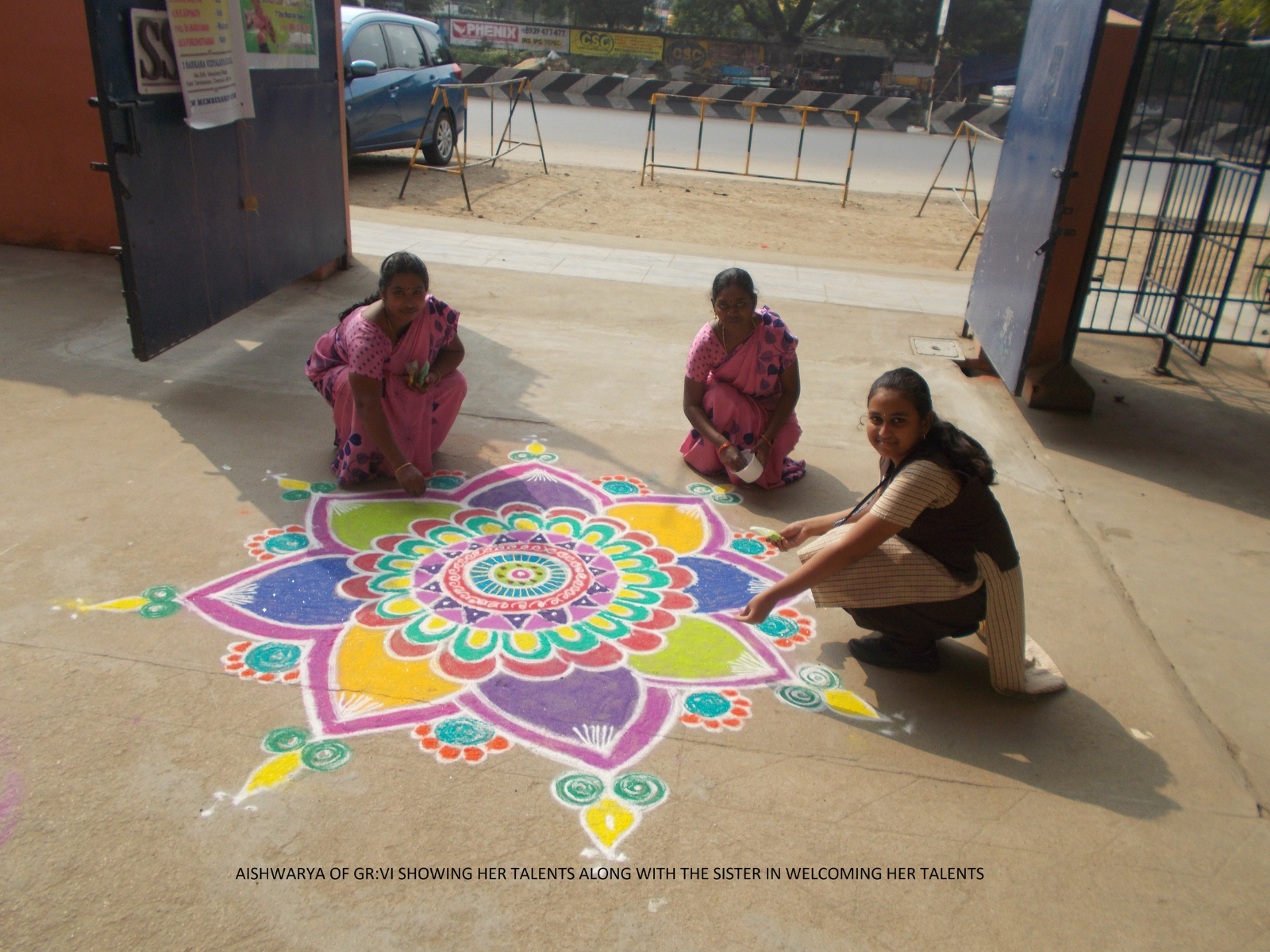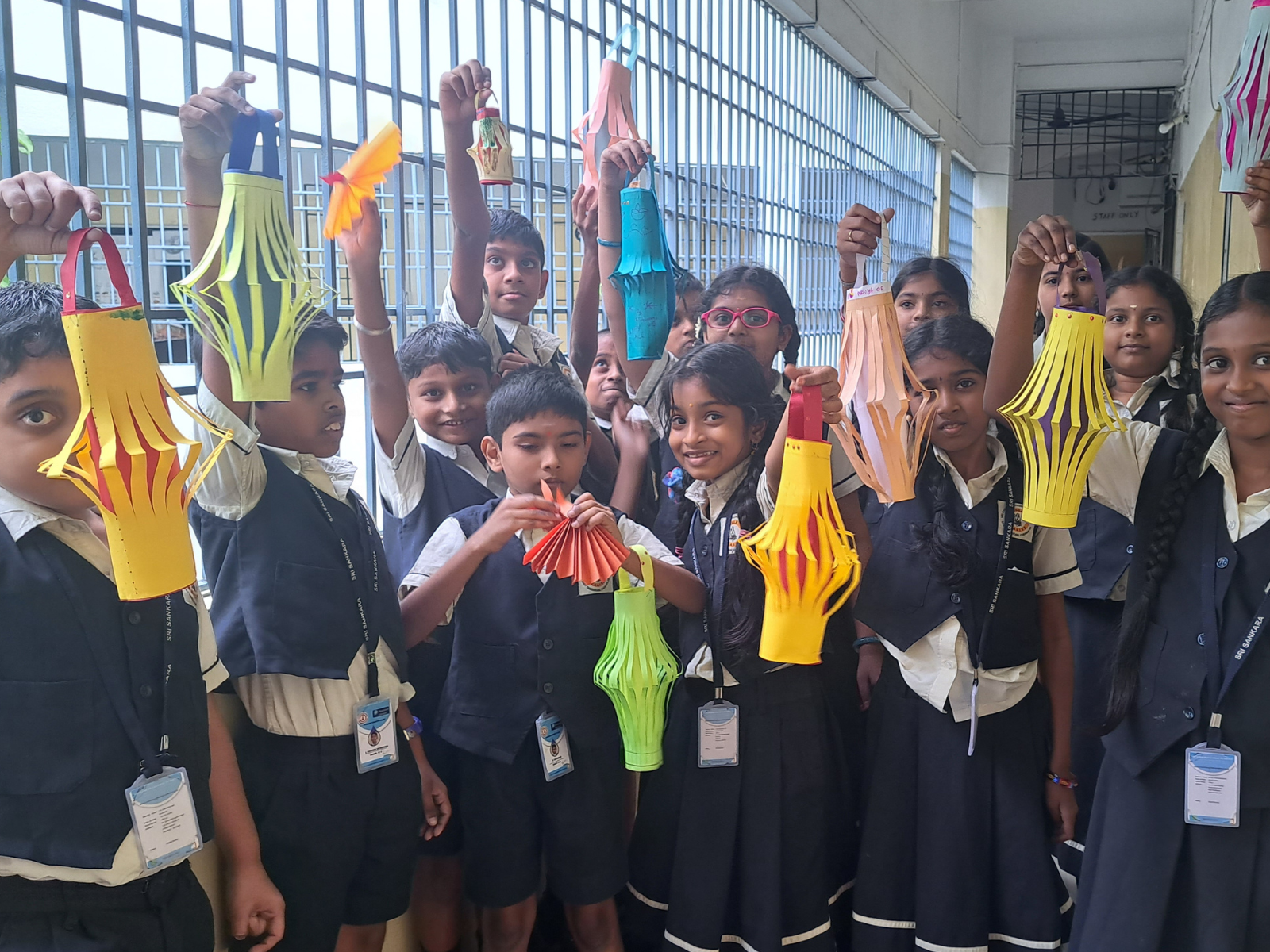
GARDENING
(VAN MAHOSTAV CELEBRATION)
“He who plants a tree, plants hope!”
Van Mahotsav is an annual tree planting festival celebrated throughout India to honor and pay respect to the mighty creators and the lungs of Mother Earth.
We at SSGA ETBM observed Van Mahotsav on the 29th of July 2022. The teachers, students and all the other staff of the school looked up to the almighty plants and celebrated this event by spreading joy and good words about plants.
The curiosity to learn and the will to change were clearly seen in the children the following days. As always said, “Its better late than never!”. There is no perfect timing to do anything. It’s you who makes the present timing perfect and implements things.

RANGOLI
We at SSGA ETBM, make it a practice to Rangoli as an art form in India. It consists of making geometric designs on the floor using coloured sand, petals, flour, or even rice their by fine tuning the fine motor skills of the children.
Rangoli is an art form that originates from in the Indian subcontinent, in which patterns are created on the floor or a tabletop using materials such as powdered lime stone, red ochre, dry rice flour, coloured sand, quartz powder, flower petals, and coloured rocks. It is an everyday practice in Hindu households, however the colours are preferred during festivals and other important celebrations as it is time consuming. Rangolis are usually made during Diwali or Tihar, Onam, Pongal, and other Hindu festivals in the Indian subcontinent, and are most often made during Diwali. Designs are passed from one generation to the next, keeping both the art form and the tradition alive.

ORIGAMI
The children at SSGA ETBM as a part of their Art classes involve themselves in origami activities. Children enthusiastically participate in this creative venture with great zeal and high spirits. The tiny tots were amazed to see transformation of a flat sheet square of paper into a finished sculpture through folding and sculpting. Budding stars created unique and exclusive shapes and structures to showcase their finesse in paper craft. They made house, fan, fish, flower, boat, butterfly, dog, bird etc. and displayed them with great pleasure and gratification. This activity triggered their imagination and enhanced their creative skills. Origami provided our little ones with wonderful “schematic learning through repeatable actions”. As the teachers demonstrated, children watched closely and listened carefully to the specific instructions and then carried them with originality, neatness and accuracy. The paper folding craft was not only a fun filled experience, but it also proved to be a valuable means to develop artistic skills in the young ones.
.png)
COFFEE PAINTING
Coffee painting is the art of creating wonderful monochromatic paintings of any object conjured up by the imagination. It is amazing to see how works like these can be created using a single colour, and yet it is possible.
Learning objectives:
- observational drawing.
- proportions.
- shape placement/size relationship.
- linear drawing.
- stylizing a drawing.
- implied texture.
- concept of washes.
- building up value with layers.

DANCE
Our mission is to instill a great love of dance, while inspiring self-confidence, discipline and respect of the performing arts. We cultivate inner peace, positive attitudes, composure through expressions and intricate rhythmic patterns by including diverse cultures and communities. We envision to propel the arts community by fostering Indian classical dance and music with artistic excellence. . The students of classes I-VIII have regular classes in their schedule that help them.

MUSIC
Music is generally defined as the art of arranging sound to create some combination of form, harmony, melody, rhythm or otherwise expressive content. Indian classical music is the classical music of the Indian subcontinent. It has two major traditions: the North Indian classical music known as Hindustani and the South Indian expression known as Carnatic. We envision to propel the arts community by fostering Indian classical dance and music with artistic excellence. . The students of classes I-VIII have regular classes in their schedule that help them.

A TRIP TO CULTURAL CENTER
The cultural centres have historically combined a variety of aims. These include promoting active citizenship through cultural and artistic activities, revitalising abandoned industrial buildings and developing neglected urban areas, enhancing creativity, community, networks, entrepreneurship and innovation. A cultural centre, in general, is thus a particular cultural institution that often combines art and creative activities (with spaces and technical facilities for exhibitions, rehearsal, performances, workshops) with a focus on diversity (a variety of activities, users and user groups), civic engagement, involvement of volunteers and openness to bottom-up initiatives. The centres are normally closely tied to the local neighborhood, they often run on a rather low budget (with a mix of public and sometimes private funding and tickets/fees), they offer open and flexible spaces and combine professional and amateur as well as cultural and social activities.







